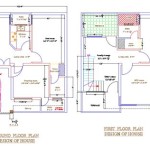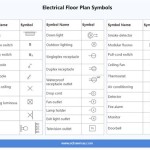The Compatibility of Potted Plants in Garden Soil
The practice of integrating potted plants directly into garden soil is a common gardening technique. However, the success of this method hinges on understanding the factors involved. Considerations encompass plant species, soil composition, drainage, and potential consequences for both the plant and the surrounding garden environment. Proper execution can offer benefits, such as enhanced root development and reduced maintenance, while poor planning can lead to root rot, nutrient imbalances, and difficulties in relocating the plant later on.
The decision to plant a potted plant directly into garden soil should not be taken lightly. The original intention of the pot is to provide a contained environment with specific soil characteristics tailored for the plant’s needs. Removing it from this controlled environment and placing it into the garden soil introduces a range of new factors that can significantly impact the plant's health and growth. A thorough assessment of these factors is crucial before proceeding.
The initial assessment should consider the inherent properties of the garden soil. The texture, fertility, and pH level are paramount. If the garden soil is heavy clay, for example, it may retain excessive moisture, leading to root rot. Similarly, if the soil is sandy and drains too quickly, the plant may struggle to obtain sufficient water and nutrients. A soil test is highly recommended to ascertain the exact composition and nutrient levels, providing a clearer picture of whether the existing soil is suitable for the plant in question.
Furthermore, the plant’s specific requirements must be carefully considered. Some plants thrive in acidic soil, while others prefer alkaline conditions. Some require well-drained soil, while others tolerate consistently moist environments. Understanding the plant’s native environment and ideal growing conditions is crucial for determining its suitability for integration into the garden soil. Simply placing a plant in the ground without considering its needs can result in stunted growth, disease susceptibility, or even plant death.
The size and health of the plant are also important factors. A young, vulnerable plant may be more susceptible to the stresses of transplanting and the challenges of adapting to a new soil environment. Older, more established plants are generally more resilient and better equipped to handle the transition. However, even robust plants can suffer if they are not properly acclimated to their new surroundings. It's also important to consider any existing diseases or pests that the plant might be carrying; introducing an infected plant into the garden can spread problems to other plants.
Analyzing Garden Soil Characteristics
Comprehensive analysis of garden soil is the foundation for successful plant integration. This analysis should extend beyond a cursory visual inspection and incorporate a formal soil test. A soil test typically measures pH, nutrient levels (nitrogen, phosphorus, potassium), and organic matter content. The pH level is a critical indicator of soil acidity or alkalinity, impacting nutrient availability. Essential nutrients like nitrogen, phosphorus, and potassium are vital for plant growth, and imbalances can hinder development. Organic matter improves soil structure, water retention, and nutrient content.
The soil texture, determined by the proportions of sand, silt, and clay, significantly impacts drainage and aeration. Sandy soils drain quickly, requiring more frequent watering, while clay soils retain water and can become waterlogged. Ideally, garden soil should have a loamy texture, representing a balanced mix of sand, silt, and clay, providing both good drainage and water retention. Soil texture can be assessed through a simple hand test, but a laboratory analysis provides a more accurate determination.
If the soil test reveals deficiencies or imbalances, amendments can be added to improve its suitability for the plant. For example, acidic soil can be amended with lime to raise the pH, while alkaline soil can be amended with sulfur to lower the pH. Compost, manure, or other organic matter can be incorporated to improve soil structure, water retention, and nutrient content. It's important to note that soil amendments should be applied according to the recommendations of the soil test to avoid over-correction or further imbalances.
Understanding the existing microbial activity within the garden soil is also beneficial. Beneficial microorganisms, such as mycorrhizal fungi, can enhance nutrient uptake and improve plant health. However, harmful microorganisms, such as disease-causing fungi or bacteria, can negatively impact plant growth. A healthy soil ecosystem promotes a balance of beneficial and harmful microorganisms, contributing to overall plant health. Soil testing can sometimes provide information about microbial activity, but this is not typically a standard part of a routine soil test.
Beyond the chemical and physical properties of the soil, its history should also be considered. Has the soil been previously treated with herbicides or pesticides? Were there any issues with plant diseases in the past? This historical information can provide valuable insights into potential problems and inform decisions about soil preparation and plant selection. For example, if the soil has a history of disease, it might be necessary to implement soil sterilization techniques or select disease-resistant plant varieties.
Plant-Specific Needs and Adaptation
Each plant species possesses unique requirements regarding soil type, moisture levels, sunlight exposure, and nutrient needs. Before transplanting a potted plant into garden soil, it is vital to thoroughly research its specific needs. Understanding the plant’s native habitat and ideal growing conditions offers valuable insights into its preferences. The plant’s growth habit, including its mature size and root system, should also be considered to ensure adequate space and support.
Consider the plant's tolerance to different soil types. Some plants are adaptable to a wide range of soil conditions, while others are highly sensitive to soil pH, drainage, or nutrient levels. For instance, acid-loving plants like azaleas and rhododendrons require acidic soil, while lavender prefers alkaline soil. If the garden soil does not meet the plant's specific requirements, soil amendments can be used to modify its properties. However, it is often more effective to select plants that are naturally suited to the existing soil conditions.
Acclimation is a critical step in the transplanting process. Gradually exposing the plant to the outdoor environment and the garden soil helps it to adjust to the new conditions. Begin by placing the potted plant in a sheltered location outdoors for a few hours each day, gradually increasing the exposure time over a period of several days or weeks. This allows the plant to adapt to changes in temperature, humidity, and sunlight intensity, reducing the risk of transplant shock. It also gives the plant time to develop its root system in preparation for being planted into the ground.
When transplanting, handle the plant carefully to minimize root disturbance. Gently remove the plant from its pot, taking care not to damage the roots. If the roots are tightly bound, gently loosen them before planting. Dig a hole that is slightly larger than the root ball and amend the soil in the planting hole with compost or other organic matter. Place the plant in the hole, ensuring that the top of the root ball is level with the surrounding soil. Backfill the hole with amended soil and water thoroughly. Consider using a root stimulator to encourage root growth and reduce transplant shock.
Ongoing monitoring and maintenance are essential for ensuring the plant's long-term health and success. Regularly check the soil moisture levels and water as needed. Fertilize the plant according to its specific needs, using a balanced fertilizer or a fertilizer formulated for the particular plant type. Monitor for signs of pests or diseases and take appropriate action to control them. Provide adequate support for the plant as it grows, such as staking or trellising. Regularly prune the plant to maintain its shape and promote healthy growth.
Potential Benefits and Risks
Integrating potted plants into garden soil offers several potential benefits. It allows for greater root expansion, leading to improved nutrient uptake and overall plant vigor. Plants in the ground have access to a larger volume of soil and water, reducing the need for frequent watering and fertilization. Furthermore, planting directly in the ground can provide better insulation for the roots, protecting them from extreme temperatures. The aesthetic appeal of a unified garden bed can also be a motivating factor for this approach.
Conversely, there are also risks associated with this practice. Poor drainage in the garden soil can lead to root rot, particularly in plants that prefer well-drained conditions. Soilborne diseases and pests can also pose a threat, potentially infecting the plant's roots and foliage. Removing a plant from the ground later can be difficult, especially if it has developed an extensive root system. Moreover, nutrient imbalances in the garden soil can negatively impact plant growth, especially if the soil is deficient in essential nutrients or has an imbalanced pH.
One of the significant considerations is the difficulty of relocating the plant after it has been established in the ground. If the plant needs to be moved due to changes in garden design or unfavorable growing conditions, digging it up can be challenging and may damage the root system, potentially causing transplant shock or even plant death. Using a biodegradable pot can mitigate this issue to some extent, as the pot will eventually decompose in the soil, allowing the roots to spread freely while still providing some containment for easier removal if necessary.
Another risk is the potential for the garden soil to be contaminated with harmful substances. If the soil has been treated with herbicides or pesticides in the past, these chemicals can persist in the soil and negatively impact plant growth. Similarly, if the soil is contaminated with heavy metals or other pollutants, it can be harmful to both the plant and the surrounding environment. A soil test can help identify potential contaminants, and appropriate remediation measures can be taken before planting.
Ultimately, the decision of whether to plant a potted plant directly into garden soil depends on a careful assessment of the plant's needs, the soil conditions, and the potential benefits and risks. With thorough planning and proper execution, this technique can be a valuable tool for enhancing garden aesthetics and promoting plant health. However, without adequate preparation and consideration, it can lead to disappointment and even plant loss. Therefore, a well-informed approach is essential for maximizing the chances of success.

Potting Soil 101 How To Choose The Right Mix For Your Plants Garden Design

Best Potting Soil For Outdoor Potted Plants Proven Winners

Soil For Plants Ultimate Guide To Choose Best Potted

Potting Soil 101 How To Choose The Right Mix For Your Plants Garden Design

The Best Soil For Container Gardening With Recipe Get Busy

Soil Sense Potting Materials Make A Difference When Growing Plants In Containers

Ask Gardenerd Preventing Compacted Soil In Pots

How Much Soil Should You Put In A Pot The Fabulous Garden

3 Reasons Why Using Garden Soil In Pots Will Harm Plants Homes Gardens
:strip_icc()/101608522-aeff512e50f04c479e84624811d3a7d5.jpg?strip=all)
Guide To Soils And Potting Mixes








